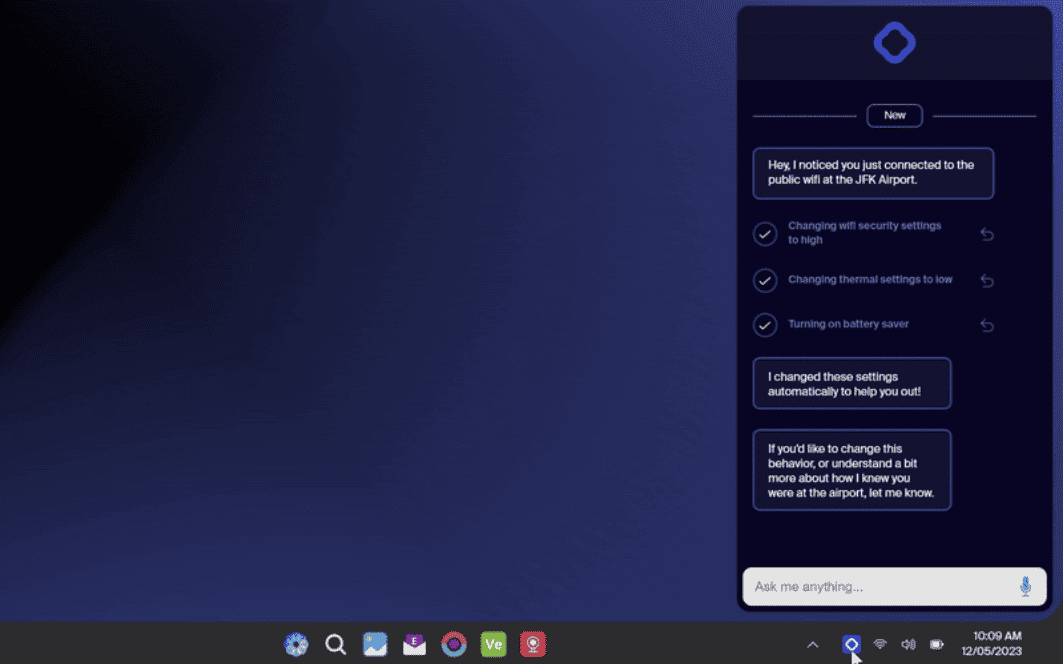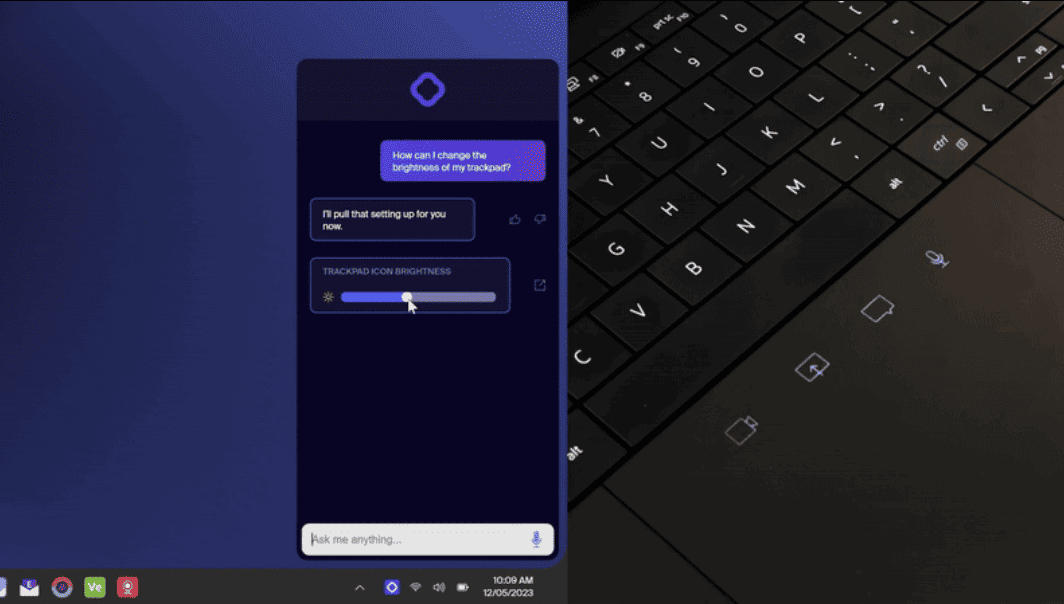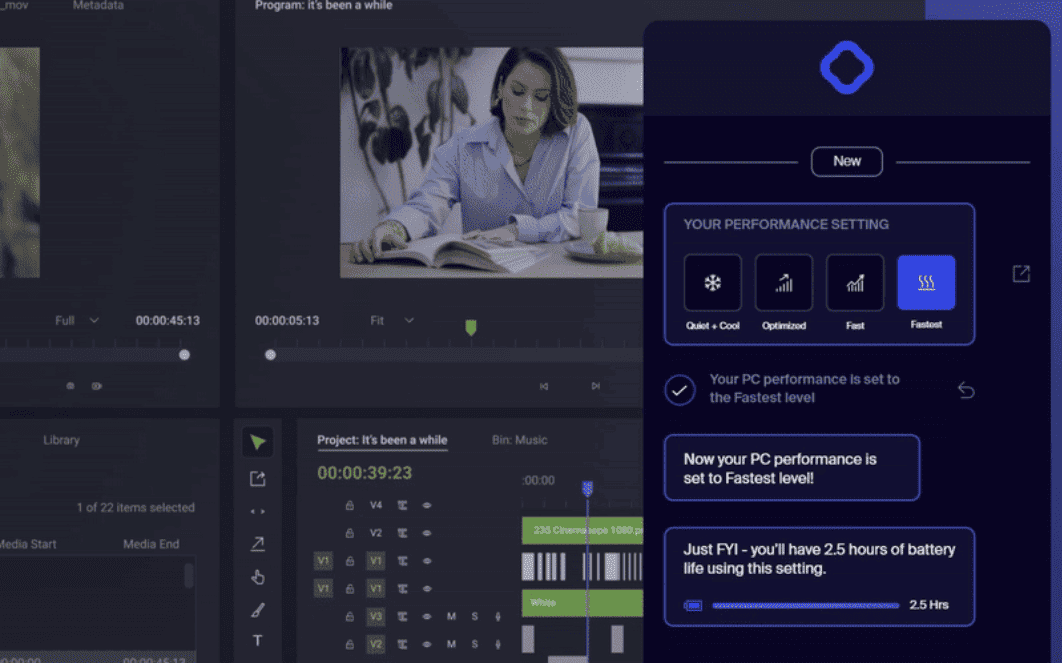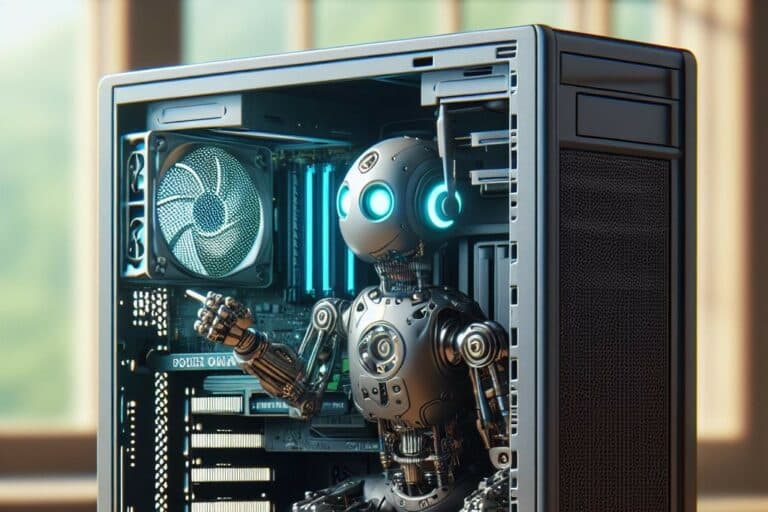Predictions about the “AI PC” are littered with vagaries. PC vendors need a new unique selling point to regain the once-impressive sales figures it enjoyed during the Covid-19 pandemic. Dell is already showing how the AI-powered computer should make itself useful.
Dell presented mock-ups to Gizmodo that show how Windows may operate eventually. Most striking is the proactive role of its future AI assistent. For example, the PC of the future can instantly adjust security settings as soon as it connects to public Wi-Fi and resolve persistent crash problems on its own. In effect, the end user gets their desired PC experience without having to do anything to achieve it. At least that’s the idea. Those who do want to tweak settings can simply press a Copilot button on their keyboard and ask the AI assistant to do as required.

A simplified experience
It’s also notable that the features being presented circumvent the conventional Windows interface. Instead of searching for a specific menu, this Copilot concept allows the end user to adjust pretty much anything from a single UI. Dell cites as an example that trackpad brightness can be adjusted directly from the Copilot menu. It’s all possible in the form of a natural conversation.

When you boil it all down, we’re still just talking about a new shortcut here. Still, the implication is that the user experience is set to be completely upended thanks to this new AI functionality. Digitally less proficient users can avoid having to go three menu options deep to alter something.
Also, according to Dell, the PC of the future appears to behave quite autonomously. Another example shows that the user merely demands that the the PC has to run at its most optimized settings. The AI assistant not only takes care of that, but also points out that such performance-oriented settings lead to a shorter battery life. The promise is one of interactivity, with the AI functions being agile and context-sensitive.

An enigmatic OS isn’t what anybody wants
The rationale for a party like Dell to push for the AI revolution in this way is obvious. Whereas every PC with an on-off switch was gobbled up by consumers during the Covid era, PC vendors are now facing historically low sales in 2023. Several experts predict an improvement to show up in the numbers in 2024, thanks in part to the inclusion of AI features in PCs. In addition, it’s likely that many organizations will replace their current equipment soon simply because it’s time to do so. The usual three-to-five-year cycle is just now reaching the end stage for many businesses and consumers, a coincidence that will give PC vendors hope. Nevertheless, we recently heard from Acer that vendors must also tell a strong story to convince customers this time.
With the introduction of Intel Core Ultra laptops, “true” AI PCs are finally on the market. Specifically, that means there’s now a brand new Neural Processing Unit designed to run AI workloads efficiently. In the long run, it should mean that generative AI functionality within the OS and inside applications is not entirely dependent on the cloud. Think, for example, of all the Copilot options within the Microsoft offering or Generative Fill in Photoshop. In this regard, the CPU and GPU also help, as not every AI task requires the exact same hardware.
However, the Dell example does show that the AI revolution is not an entirely positive development. For example, under the guise of simplification, it is claimed that the Windows UI can be further bypassed, which would mean that the existing shortcomings of the UX would not have to be prioritized. In addition, other applications will have to actually integrate the new AI functionality to be of use. The automatic adjustment of settings on-the-fly is promising, allowing a battery to last longer, hardware to be used optimally and security to be guaranteed. Yet there should be transparency in such areas as well: currently, Windows is already struggling to explain why you should choose “High-performance” and not “Balanced” at certain times.
The key: proprietary data
At Intel, we got a somewhat clearer picture of why the AI PC can add value. For example, they stressed the importance of proprietary user data, which can’t just make its way to the cloud without being a major privacy violation. No concrete applications were mentioned, but there are plenty of use-cases that deploy personal files in an AI workload. One could search for relevant tax information by using generative AI on one’s own system, to summarize long Word documents or to quickly search through video and audio sources. There actually is a practical use for GenAI on personal computers. The hype around it is somewhat unnecessary, since the innovations we’re talking about are evolutionary for the user experience. After all, apps will gradually adopt AI, despite frantic efforts by Intel to get its AI hardware to be used by 100+ software parties.
That will require an ecosystem of unified tools, which Intel is working on with developer toolkit OpenVINO, for example. It will ultimately be up to app developers whether the AI PC as proposed by Intel, Dell and Microsoft becomes a reality.
